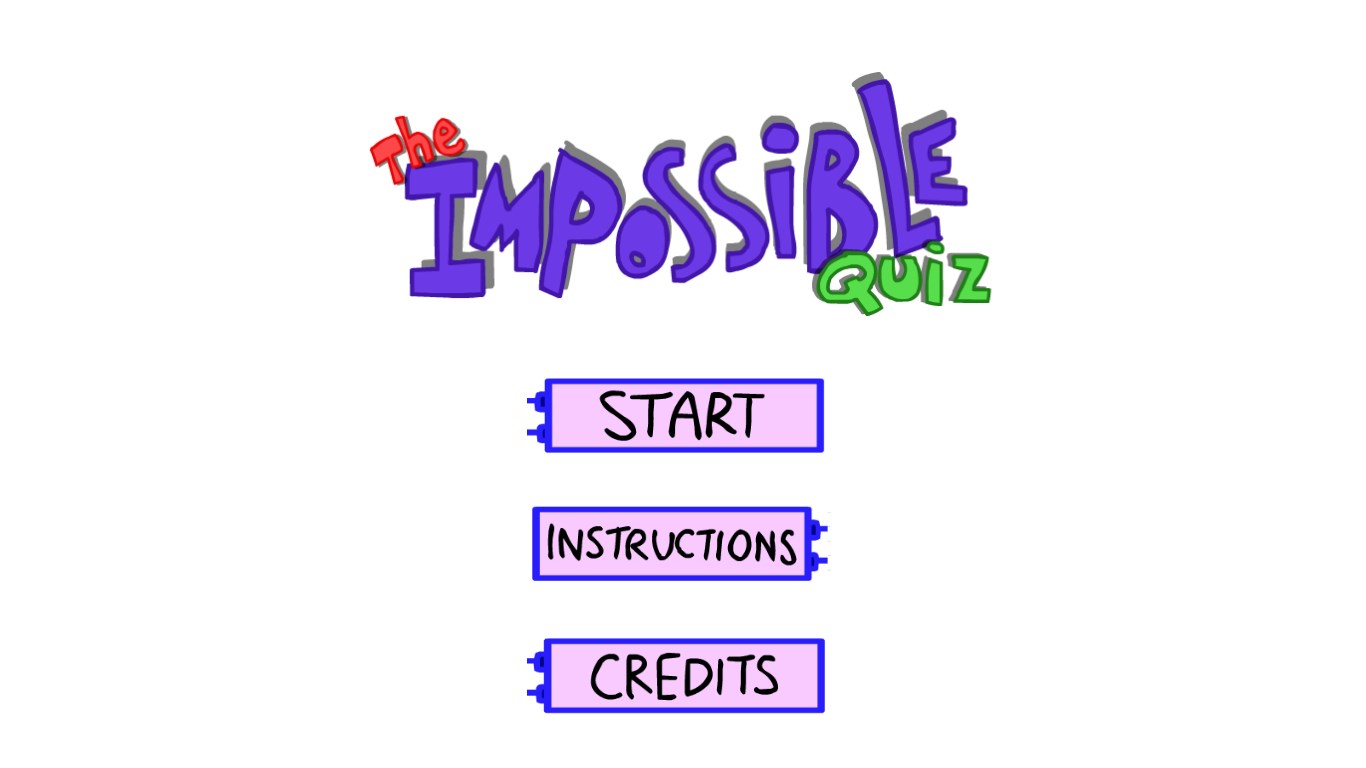The Impossible Quiz is one of those rare internet creations that transcended its humble beginnings to become a cult classic. It’s simple, frustrating, hilarious, and oddly addictive. For many, it was more than just a web game—it was a shared experience of laughter, confusion, and determination.
Created in the mid-2000s, during the golden era of Flash games, the Impossible Quiz became a cultural phenomenon. It challenged logic, toyed with expectations, and proved that sometimes the hardest puzzles are the ones that make no sense at all. But where did this bizarre creation come from, and why does it continue to hold a place in internet history even decades later? Let’s go behind the scenes of the web’s hardest game.
The Web’s Golden Age of Creativity
To understand the rise of the Impossible Quiz, we first need to look back at the digital landscape of the mid-2000s. This was the era of Flash games, YouTube beginnings, and online communities like Newgrounds, Miniclip, and DeviantArt. These platforms were creative playgrounds for indie developers who didn’t need studios or funding—just imagination.
Games back then didn’t have corporate polish. They were experiments—funny, chaotic, and often totally absurd. The internet was still young and unpredictable, and that energy set the stage for something like the Impossible Quiz to thrive. It was born in a time when strange ideas could go viral just because they were different.
The Birth of the Impossible Quiz
The Impossible Quiz was created by British developer Chris McManus, known online as Splapp-Me-Do. It started as a small project built out of curiosity and humor rather than ambition. McManus combined surreal art, trick questions, and absurd humor to create a game that didn’t follow any traditional logic.
The game was officially released in 2007 and quickly spread across the web. Players everywhere shared it through forums, blogs, and school computers. The premise was simple: answer a series of questions, many of which seemed straightforward but actually hid traps, puns, or completely illogical answers.
It wasn’t just a trivia game—it was a psychological test of patience and perception. Every time a player thought they had it figured out, the game threw something unexpected their way. And that unpredictability was the secret behind its success.

Why It’s Called Impossible
At first glance, the Impossible Quiz looks like a simple multiple-choice game. But the title isn’t a joke—it’s a warning. The quiz asks over a hundred questions that challenge your logic, test your reflexes, and often trick you into thinking too literally.
One question might read, “Click the smallest dot,” but the correct answer could be clicking the dot in the letter “i.” Another question might rely on British slang or absurd wordplay that makes no sense to anyone outside the developer’s humor.
Players quickly realized that the only way to “win” was to fail repeatedly. Memorization became a form of progress. Every wrong answer taught you something new about how the game thought. In that sense, the Impossible Quiz wasn’t just about knowledge—it was about adaptability.
Its design philosophy embraced unfairness on purpose. It made players question everything they assumed about logic, turning frustration into entertainment.
The Psychology of Fun and Frustration
Why would anyone enjoy a game that constantly tricks and frustrates them? The answer lies in psychology. The Impossible Quiz perfectly taps into two emotional triggers—curiosity and reward.
Every time players fail, they experience irritation, but that irritation fuels curiosity. They need to know the answer. Once they finally discover it, the small victory releases a burst of satisfaction. This loop of frustration followed by reward keeps players hooked far longer than traditional games.
It also plays into nostalgia and humor. Many of the game’s jokes are so ridiculous that players can’t help but laugh—even at their own mistakes. It’s one of the few games that made failure fun.
This emotional rollercoaster is what gave the Impossible Quiz its staying power. It wasn’t about beating the game; it was about enduring it and laughing along the way.
Going Viral: The Power of Internet Culture
When the Impossible Quiz hit the web, it spread like wildfire. School computer labs, internet cafés, and early YouTube gaming channels became its stage. Friends dared each other to finish it, teachers caught students playing it in class, and streamers began recording their reactions.
It became part of a broader culture of “rage games”—titles that were intentionally difficult or absurd, such as QWOP, Happy Wheels, and later, Flappy Bird. What set the Impossible Quiz apart was its personality. It wasn’t just hard; it was clever, mischievous, and funny.
By the late 2000s, millions had played it. The combination of simplicity, humor, and unpredictability made it an icon of the Flash era—a game that defined what viral entertainment meant before social media dominated everything.
The Sequels and Spin-Offs
Following the massive success of the first game, Splapp-Me-Do released The Impossible Quiz 2 and The Impossible Quiz Book. These follow-ups expanded on the concept with new mechanics, improved visuals, and fresh questions that were just as infuriating as the originals.
Players were thrilled to have new challenges, and even though the formula stayed the same, the series continued to evolve. Each version maintained that unique blend of logic-breaking humor and unpredictability.
Later, mobile versions for iOS and Android brought the quiz to a new generation of players. The shift from Flash to mobile ensured the game’s survival as Flash technology began to fade away in the 2010s. Even now, remastered HTML5 versions and fan-made recreations keep the Impossible Quiz alive.
Why It Still Matters
In a world of realistic graphics, massive open worlds, and billion-dollar budgets, how does a simple quiz game still stay relevant? The answer lies in authenticity. The Impossible Quiz represents a pure form of creativity—a time when the internet felt personal, weird, and free.
It doesn’t rely on microtransactions, updates, or online leaderboards. It’s just you, your brain, and the absurd logic of one developer’s imagination. That simplicity makes it timeless.
It also holds a nostalgic charm for those who grew up in the early 2000s. For many, replaying it feels like revisiting an old friend—a reminder of when the internet was less commercial and more experimental. The Impossible Quiz continues to thrive because it doesn’t try to fit in; it celebrates the chaos that made the early web fun.
Lessons from the Impossible Quiz
The Impossible Quiz offers valuable lessons for creators and players alike.
For creators, it proves that originality always wins. You don’t need high-end graphics or a massive budget—just a fresh idea and a willingness to break rules. It also demonstrates the importance of emotional design. Frustration, laughter, and surprise can create deeper engagement than flawless polish ever could.
For players, it teaches patience and adaptability. Success often comes after failure, and that’s part of the joy. Every wrong click in the Impossible Quiz becomes a lesson in thinking differently.
Ultimately, the game celebrates imperfection. It doesn’t punish players for being wrong—it invites them to laugh and try again. That’s a rare kind of design philosophy that continues to inspire developers even today.
Conclusion
The Impossible Quiz isn’t just a relic of internet history—it’s a symbol of creativity, humor, and unpredictability. It reminds us of a time when games could be strange, challenging, and unapologetically fun.
Its enduring appeal lies in its simplicity: no complex graphics, no grand narrative—just questions that mess with your expectations. And yet, behind the absurdity, it captures something profoundly human: our need to solve, to understand, and to keep trying even when the odds are ridiculous.
The Impossible Quiz may drive you crazy, but it also makes you smile. It shows that frustration and fun can coexist, and that sometimes, the best challenges aren’t the ones you can win easily—they’re the ones that make you think differently.
So, if you ever find yourself facing another impossible task—inside or outside the screen—remember what the Impossible Quiz taught us: don’t overthink it, stay curious, and always be ready to laugh at the unexpected.
Also read :Boxing Random: The Unpredictable Sport That Keeps Us Hooked















